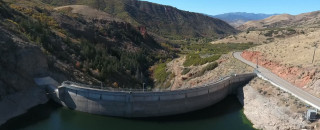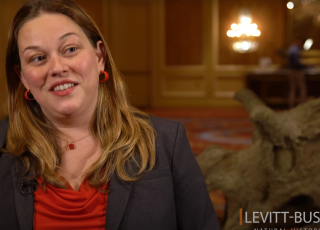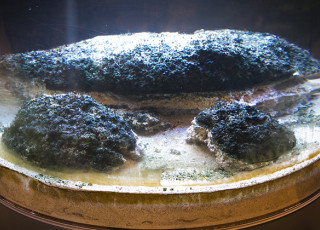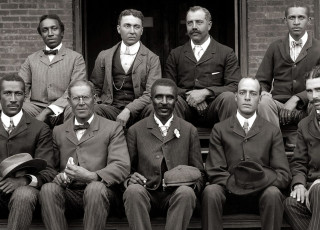Keeping Fish in Mind for Decisions Downstream
The East Canyon Dam presents a substantial barrier to migrating fish. Credit: Sarah Null
By Riley Black
If you were a fish, what would make your watery home more comfortable?
The question isn't as simple as it might first appear. Naturally, fish rely on water to survive. But not just any river or stream will do. Different species have varied needs, touching everything from what's in the water to where the water goes.
"Important habitat considerations for fish include water temperature, dissolved oxygen, connectivity of habitats, presence of non-native species which might prey upon fish or compete for food, substrate, food availability, and more," says Utah State University watershed scientist Sarah Null. A fish like Utah's native Bonneville cutthroat trout doesn't thrive in just any body of water. The species has its own requirements that set the boundaries for where they live.
How waterways become divided, for example, can be a huge issue for fish. Bonneville cutthroat trout prefer cold, fast-moving water. The trouble is that humans have broken up these sections of river - something called fragmentation - by trying to attend to our own water needs. "Rivers become fragmented from dams, culverts, irrigation infrastructure, roads, and sometimes even low streamflows or poor water quality," Null says. East Canyon Dam stands out as one example. While the waters below the dam are good habitat for the Bonneville cutthroat trout, the dam creates an artifical barrier to the fish that prevents them from migrating to breed. And even if the fish could flop over the dam, the human-made creation has elevated the water temperature behind the structure and made the habitat less-suitable for the fish.
But there are ways around the problem that can benefit both people and fish. During the 20th century, Null says, building big dams was the primary method of supplying water to people and farms. But well into the 21st century, many alternatives now exist. Through initiatives like managing stormwater, conserving water, buying and selling water on water markets, and more. People can get the water they need without carving up essential fish habitats.
Nearly any decision made about Utah's waterways involves a tradeoff. Looking out for our native fish goes hand-in-hand with watching out for the health of our waterways, and those long-term goals are balanced against people's wants and needs. That's not just water to come out of the tap or to irrigate a field, but fishing, boating, rafting, or even just taking a stroll alongside a river. By keeping these different needs in mind, Null says, people can better balance the costs and benefits of our waterway decisions that will shape our state's natural spaces for generations.
Watch a video outlining the critical message of Decisions Downstream.
Or, read more about the latest science and exhibits from NHMU.
Riley Black is the author of Skeleton Keys, My Beloved Brontosaurus, Prehistoric Predators, and a science writer for the Natural History Museum of Utah, a part of the University of Utah in Salt Lake City. Our mission is to illuminate the natural world and the place of humans within it. In addition to housing outstanding exhibits for the public, NHMU is a research museum. Learn more.



